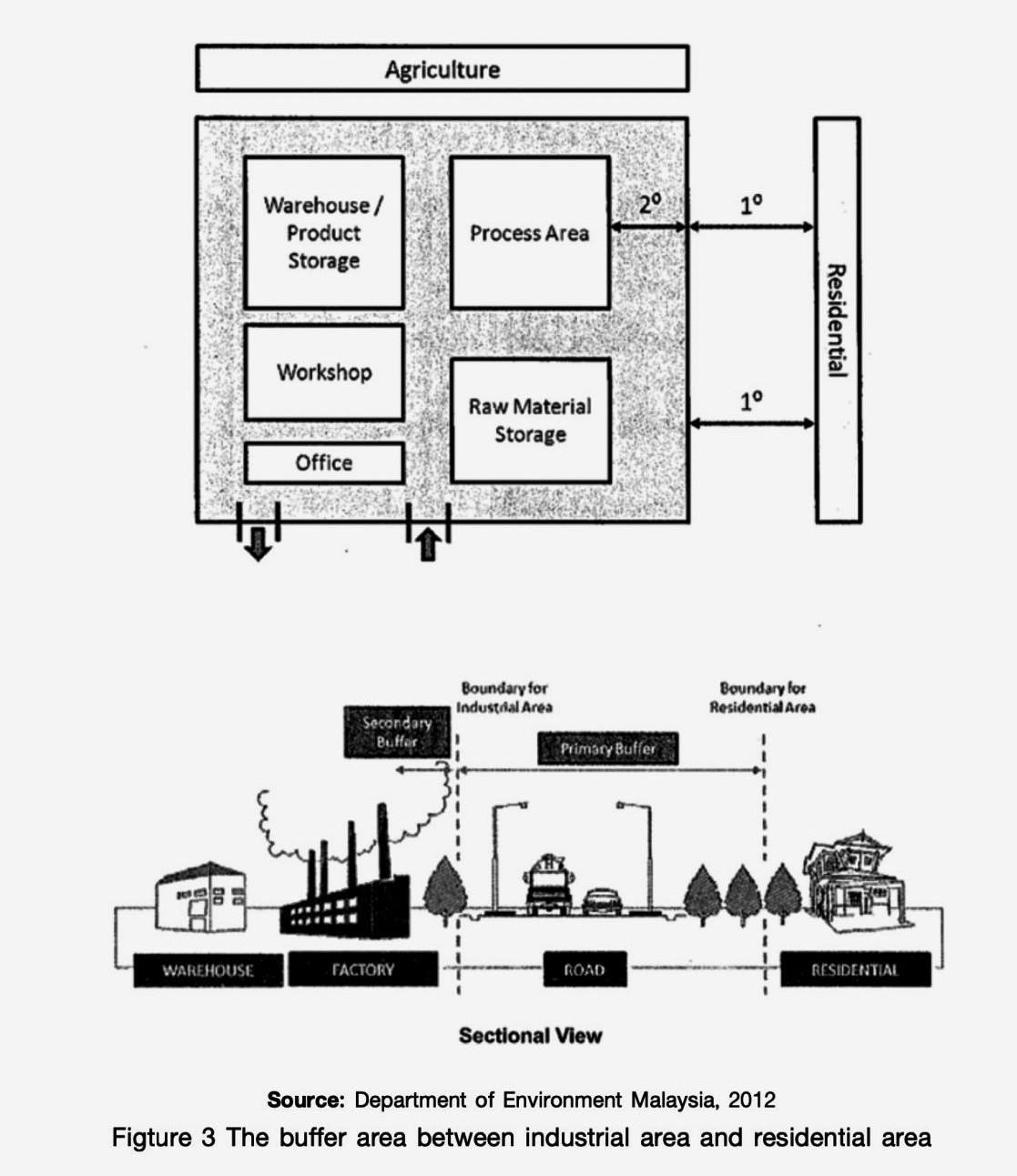Application of Buffer Distance Standard for Industrial Lands: A Case Study of Phitsanulok Logistic Station
Main Article Content
Abstract
A buffer distance, widely used as a method of spatial management around an industrial area, is identified to reduce negative impacts from industrial production processes on the surrounding area. Logistic station is considered a service-oriented industry. Activities in a logistic station could generate negative impacts that include noise and air pollution, to wider areas. At present, there are various standards to draw buffer distances for manufacturing types. However, a specific standard for logistic stations has not been identified. This paper aims to propose buffer zone standards for logistic stations by reviewing existing buffer zones used in industrial areas. This research analyzes buffer distances through an examination of physical characteristics of industrial areas and activity areas related to a logistic station. The proposed standard can be defined based on two main factors: i) physical properties of logistic stations, and ii) activities in logistic stations. The Phitsanulok logistic station project, which is currently being considered and planned for construction in the future, is a case study to illustrate an application of the proposed buffer distance standards.
Downloads
Article Details

This work is licensed under a Creative Commons Attribution-NonCommercial-NoDerivatives 4.0 International License.
All material is licensed under the terms of the Creative Commons Attribution 4.0 International (CC-BY-NC-ND 4.0) License, unless otherwise stated. As such, authors are free to share, copy, and redistribute the material in any medium or format. The authors must give appropriate credit, provide a link to the license, and indicate if changes were made. The authors may do so in any reasonable manner, but not in any way that suggests the licensor endorses you or your use. The authors may not use the material for commercial purposes. If the authors remix, transform, or build upon the material, they may not distribute the modified material, unless permission is obtained from JARS. Final, accepted versions of the paper may be posted on third party repositories, provided appropriate acknowledgement to the original source is clearly noted.
References
Cessnock City Council. (2010). Part C: General guidelines, Chapter 4: Land use conflict and buffer zones. Cessnock development control. https://www.cessnock.nsw.gov.au/
CIVITAS. (2015). Making urban freight logistics more sustainable. CIVITAS Policy note: Smart choices for cities. https://civitas.eu/
Department of Environment Malaysia. (2012). Guidelines for the siting and zoning of industrial and residential areas. https://www.doe.gov.my/
Ebregt, A., & Greve, P. D. (2000). Buffer zones and their management. JB&A Grafische Communicatie.
Environmental Protection Authority. (2005). Separation distances between industrial and sensitive land uses. Guidance for the assessment of environmental factors, 3. Government of Western Australia. https://www.epa.wa.gov.au/
Higgins, C., & Ferguson, M. (2013). An exploration of the freight village concept and its applicability to Ontario. McMaster Institute for Transportation and Logistics.
Klungnuch, W. (2012). The provision of buffer areas between industrial zone and communities: A case study of map Ta Phut industrial zone, Rayong province. [Master’s thesis, Chulalongkorn University]. Chulalongkorn University.
Lismore City Council. (2000). Chapter 11 Buffer areas. Lismore development control plan - Part A. https://www.lismore.nsw.gov.au/
Maas, F. M. (1976). Town and country planning. In M. J. Suess & S. R. Craxford (Eds.), Manual on urban air quality management. World Health Organization. Regional Office for Europe.
Singh, G. (2018). Logistics sprawl: Spatial patterns and characteristics of new warehousing establishments in The Greater Toronto and Hamilton Area. [Master’s thesis,University of Toronto]. University of Toronto.
The Major Industrial Accidents Council of Canada. (1995). Risk-based land use planning guidelines. Chemical Institute of Canada. https://www.cheminst.ca/
Western Australian Planning Commission. (1997). State industrial buffer policy. Statement of planning policy, 4.1. Government of Western Australia. https://www.dplh.wa.gov.au/


